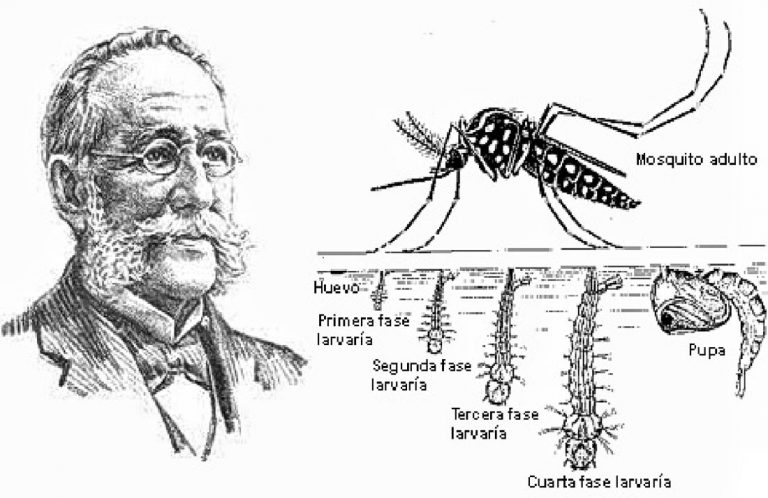Being lucky enough to live for many years away from an epidemic has made us more fragile to face the one that plagues us today. It forces us at the same time to know how difficult it is to reach their source and how to combat it.
Heated discussions divided the medical world over whether yellow fever was a contagious disease. What it was clear was that its consequences were serious and fatal. Endemically or permanently, it spread to different locations as more or less intense epidemics and small outbreaks.
Carlos J. Finlay made his first statement on the theory of the yellow fever transmitting agent at the International Sanitary Conference in Washington; United States of America, February 18th, 1881. These statements mark a step forward of great importance in medical science, because it is the first time that the possibility of a disease being transmitted, from man to man, through an intermediary agent, has been made public. It would go down in medicine history as the scientific theory of the contagion of diseases.
A significant date
On August 14th of the same year, Finlay presented his work to the Havana Academy of Sciences: “The mosquito hypothetically considered as a transmitting agent of yellow fever”, called historical by specifying the Culex mosquito, now known as the Aedes Aegypti, the inheritance transmitter of the disease arriving with this to the totality of his doctrine.
In Washington he had presented the theoretical foundations and in this, a masterful practical application of the scientifically proven value of his conception of contagion.
Finlay had enunciated one of the most significant theories about contagion and infection in disease. He formulated with great precision the postulate, most valuable for the prevention and prophylaxis of epidemic and contagious diseases: the suppression of the vector, which 140 years after it was passed, constitutes the most effective way of eradicating diseases.
Translated by: Aileen Álvarez García






